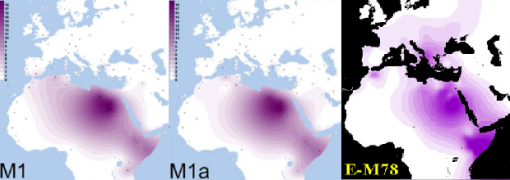After spotting this story on anthropology.net, I traced down the old pdf.
The most interesting part of this (from my POV) was this (page 42)
The depositional position of the tephra in the Jurreru River Valley, to gether with new chronometric and geochemical evidence, indicates that the ash is a product of the 74,000 year old YTT event (Petraglia et al., 2007). The recovery of Middle Paleolithic assemblages in dated deposits below and above the ash provides the first firm archaeological association, helping to resolve some of the uncertainty about archaeological associations in India. The recovery of Middle Paleolithic industries without major technological changes after the ashfall, indicate that populations survived the super-eruption. We have suggested, based on a variety of datasets, that modern humans were present in the Indian sub continent before the super-eruption, and that these populations survived this event.
I’ve observed that the 60k OOA date is a non-starter based on the arrival of people in Australia ( with TL dates of 55-60k); a pre Toba date is supported for the OOA. I’m still a bit curious why so many seems insistent on a more recent date. There are modern human sites in Israel dating from 120k (Skhul) to 100k. Not to mention that not the age estimate for the separation of African and non African populations comes to around 140k ago (Cavalli Sforza and at least one other). The moral of this is… never trust a date based on a genetic ‘clock’ unless you can check it with ADNA or archaeological data. The mismatch between the dates on the Paglicci mt DNA (H) and the estimated age of mtDNA type H on one paper should be an example. You’d think they’d start checking against known archaeological dates for population movements/ADNA to improve the accuracy of the estimates.
I have to comment that the estimated ages for expansions in NE Africa in the past few years (about 22-24k for the expansion of M1 from the Nubia area, and 6k for a Chadic expansion) are starting to come close enough to be acceptable, although Y chr dates will probably always be unreliable. Maybe someone should go over all the data for the dates of Eurasian mt DNA to see if they are still getting that pre-Toba date from the mt DNA. I suspect they won’t. There’s a the hint from what’s been published that some of the TL dates in India are now over 100k, which would be interesting if true (no firm source as yet), just this. It would mean that the expansion from Africa would have been fairly rapid into the tropical areas (similar climate, minimal adaptation time) if true.
A few related links, in no particular order so I for my own reference. I hate not being able to find stuff.
Click to access V58N1-Prasad.pdf
http://www.ox.ac.uk/media/news_releases_for_journalists/100222_1.html










